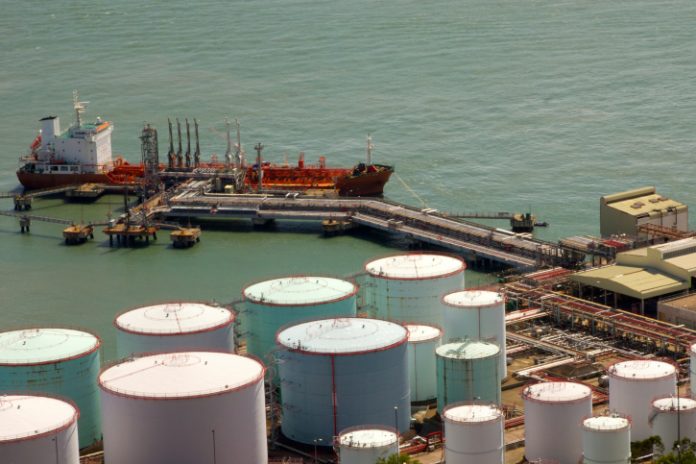By Pinar Cebi Wilber
The world liquefied natural gas (LNG) market has changed significantly since the first LNG ship carried cargoes from Louisiana to the UK, proving the feasibility of transoceanic LNG transport in 1959. This change has been even more significant in the U.S.. Over the years, we have been both an importer and an exporter of LNG, albeit more of a net importer until recently. Today, the U.S. is a major exporter in global markets thanks to an abundance of natural gas supply, brought about by advancements in fracking technologies.
If these changes are evaluated in a bubble, it is a success story for the U.S. energy industry and the nation. After all, being energy independent – or at least a net energy exporter – is one of the most important things for national security, as we have seen recently with the impacts of Russia and Ukraine war. And that independence can have bigger implications: according to CSIS experts, “Energy security in Europe – and globally – now rests on U.S. natural gas exports.”
Despite the strategic importance of U.S. natural gas in global markets, the domestic discourse around the issue has been less than celebratory. The discussion among policymakers revolves around two big issues: potential price impacts on U.S. consumers of increased LNG exports and the impact of increased production on climate change.
Price impacts became a big concern since the onset of the Ukraine-Russia war disrupted global energy markets significantly, creating short-term price spikes. Opponents of U.S. LNG exports claim that any increase in the U.S. supply to global markets could limit the amount for the domestic consumption and could have negative impacts for both residential and industrial users of natural gas. This argument is not new and over the years research, including research conducted or commissioned by the U.S. Department of Energy, has shown that the U.S. has ample supply and that price impacts would be small since the export supply would come from the increased domestic production.
But given the significant change in the dynamics of the global energy markets, we asked NERA Economic Consulting, who conducted similar studies in 2012 and 2018, to revisit the potential implications of increased U.S. LNG exports on prices. NERA considered various increased demand scenarios, such as increased U.S. demand or European supply diversification. The results of the study showed that price impacts were small, ranging from 5 to 10 cents per MMBtu in 2025, validating the results of prior studies.
We went one step further and asked NERA to evaluate how the access to natural gas, in the form of extended pipelines, might change these price dynamics and that is where we got interesting results: building adequate pipeline infrastructure lowers prices by about 10%, or 25 cents per MMBtu in 2025, under all scenarios and between 25 and 40 cents per MMBtu in 2035. These results also underline the importance of recent calls to reform the permitting process, which is key to the expansion of energy infrastructure in the U.S. Conclusions show that U.S. policymakers should be rooting for energy infrastructure development rather than blocking energy exports if their main concern is U.S. consumers.
Assuming existing studies answer the price question, how about climate change? According to the International Energy Agency, fossil fuel operations “generate over one third of all methane emissions from human activity.” The Environmental Protection Agency shows that gas production was responsible for 41% of the methane emissions in 2020. Even the industry’s main association lists methane emission reduction as one of their top priorities and voices their support for cost effective policies and direct regulation of methane for new and existing sources across the supply chain. Global consumers and investors are also demanding cleaner gas.
However, recent global developments have highlighted the integral role of natural gas in energy markets, and simply replacing or blocking its development is not in the cards in the short- and medium-term. During this past winter, many European and Asian countries resorted to coal, which has a significantly more damaging environmental impact. Given the growing role of natural gas globally, industry needs a public-private partnership to address methane emissions – the Achilles heel of natural gas. Increased efforts to address the problem are already underway in the U.S. In addition to private sector efforts to deal with methane emissions, the U.S. Department of Energy recently announced nearly $47 million in funding for 22 research projects to develop new and innovative measurement, monitoring, and mitigation technologies. Government funding of new technologies as it did with carbon capture and storage technology, could help significantly reduce methane emissions from natural gas production.
The U.S. has an ample supply of natural gas, that could help both domestic and international markets. We should work on providing access to this low-cost energy to U.S. consumers through expanded pipelines and create a system that encourages adoption of cleaner development of this resource.
Dr. Pinar Çebi Wilber is Executive Vice President and Chief Economist for the American Council for Capital Formation.
Originally published by RealClearEnergy. Republished with permission.
To read more about LNG infrastructure, click here.
To read more about barriers to the oil and gas industry, click here.


























